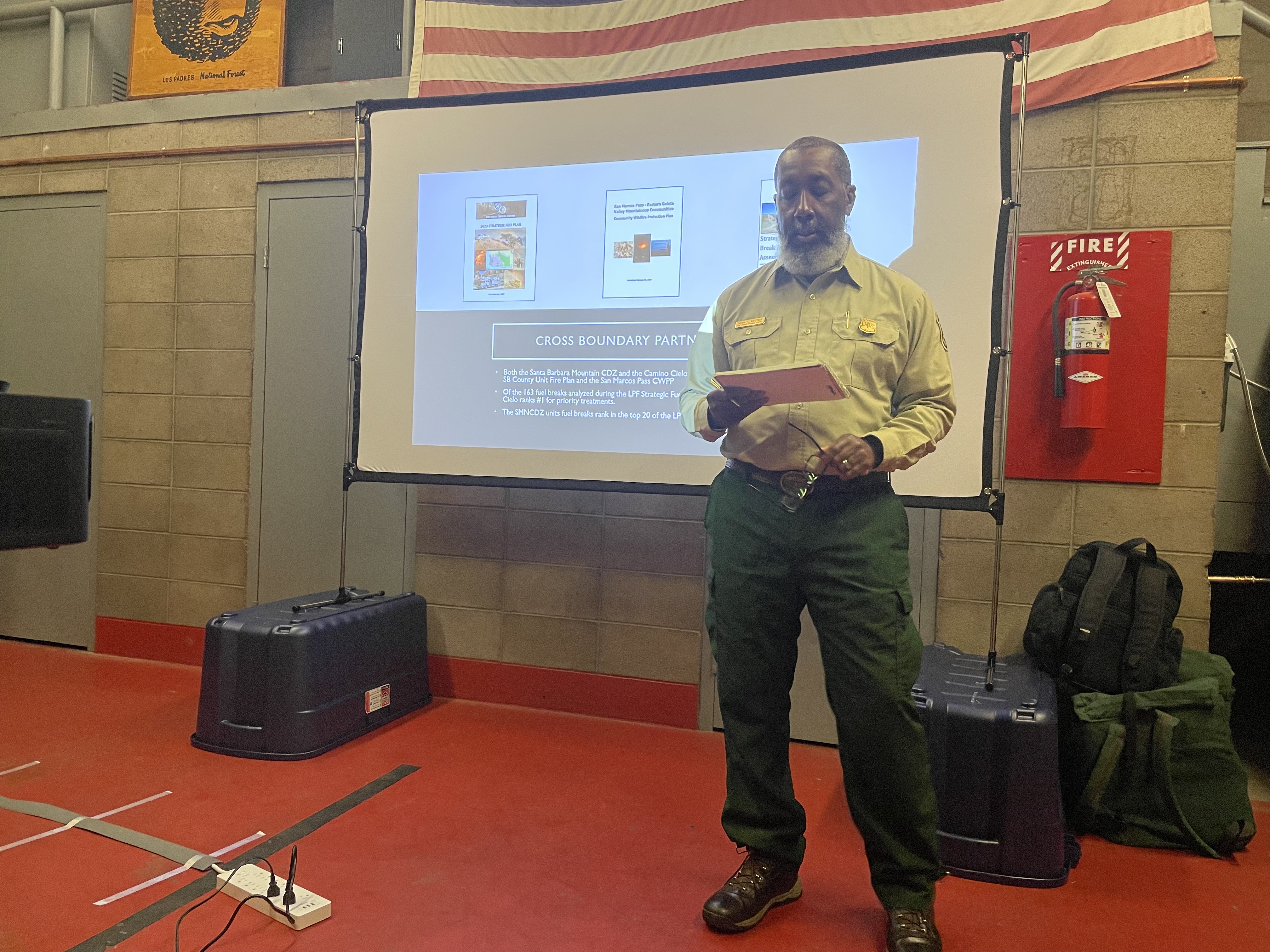About West Camino Cielo’s Fuel Break
A Boon to Firefighters and Old Growth Chaparral

We wanted to extend our thanks to the mountaintop residents and interested stakeholders who joined us at the San Marcos Fire Station on February 22 to discuss the implementation of the latest phase of the Santa Barbara Mountain Communities Defense Zone. We are grateful you came and shared your thoughts — both supporters and sceptics alike — and to listen to our partners and collaborators from the Santa Barbara Firesafe Council and Santa Barbara County Fire Department. We sincerely appreciate the support of neighbors like you.
We’d like to take this opportunity to highlight some points from the meeting for those who weren’t able to attend or watch the meeting online.
There has been some misinformation about the effectiveness of fuel breaks and their associated ecological impacts. This distracts from the underlying purpose of fuel breaks, which was heard several times at the meeting: without them there is a high likelihood that our first responders would not have all the tools needed to safely engage directly with the fire front before the flames reach residential areas.
During the meeting we noted that fuel breaks alone aren’t designed or expected to stop a wildfire — they require firefighters and suppression equipment to be effective. As such, a fuel break’s primary purpose is to give firefighters a place to get in and out quickly and safely. Fuel breaks work because the vegetation that would otherwise burn intensely has been treated prior to the fire. This will give firefighters a much better opportunity to stop fires from reaching populated areas, and to keep them as small as possible.
To put it simply, firefighters help protect communities and fuel breaks help protect firefighters. If firefighters have a safe place to engage fires, they can better protect people and the communities they live in. It provides us with a fighting chance to avoid the financial losses and the adverse health impacts of wildfire smoke along with the disruption and insecurity caused by hasty evacuations.
But it’s not just that. As was discussed at the meeting, the U.S. Forest Service is, fundamentally, a land management agency. Our mission is to protect the health of the whole landscape. We know that there is, unequivocally, more wildfires happening due to human-caused ignitions than there would have been through natural ignitions alone. The natural fire regime interval for chaparral ecosystems is 50 (+/- 10) years — much longer intervals than what we are seeing now. It is well established that these short fire return intervals in chaparral often leads to type conversions to invasive annual grasses. Because of that, protecting remnant old chaparral stands from fire is also an appropriate ecological course of action.
Forest Service fuel treatments provide a unique two-fold benefit. First, and most obvious, is the protection of life and property, especially when utilized by firefighting resources for ingress and egress. They also reinforce the ecological landscape heterogeneity by limiting repeat fires which degrades our valuable and imperiled chaparral systems. That said, chaparral is generally very dry and flammable, and when coupled with drought stress and wind/extreme weather conditions, suppressing wildfires can be extremely difficult.
Yes, there is an ecological tradeoff, but the truth is the 1,000 acres included in the Santa Barbara Mountain Community Defense Zone and Camino Cielo Fuel Defense Zone Projects pales in comparison with the more than 281,000 acres that the Thomas Fire burned. As we said several times during the community meeting: it’s a chance or a choice.
Our fuels management work is supported by extensive environmental planning that goes into all of our project work. The Land Management Plan (https://www.fs.usda.gov/main/lpnf/landmanagement/planning) for the four Southern California national forests — the Cleveland, San Bernardino, Angeles, and Los Padres — specifically directs the four forests to maintain fuel breaks. A recent county-wide prioritization of fuel breaks is helping determine which fuel breaks are the most important for wildfire mitigation and are prioritized to receive the most immediate treatment while others that were constructed in the 1960s and ‘70s have been deemed unnecessary, and will not be treated and reopened.
Together with measures to harden homes and create defensible space around them that are led by our state and county partners, hazardous fuel reduction work and fuel break treatments by federal land managers are creating conditions for the most favorable outcomes for communities during wildfire emergencies.
Daryl Hodges is District Ranger for Los Padres National Forest, Santa Barbara Ranger District.
